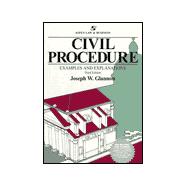
| Preface to Students | ix | ||||
| Acknowledgments | xi | ||||
| Special Notice | xiii | ||||
| PART ONE: CHOOSING A PROPER COURT | 1 | (132) | |||
|
3 | (20) | |||
|
23 | (18) | |||
|
41 | (14) | |||
|
55 | (18) | |||
|
73 | (12) | |||
|
85 | (16) | |||
|
101 | (18) | |||
|
119 | (14) | |||
| PART TWO: STATE LAW IN FEDERAL COURTS | 133 | (70) | |||
|
135 | (24) | |||
|
159 | (24) | |||
|
183 | (20) | |||
| PART THREE: THE SCOPE OF THE ACTION | 203 | (62) | |||
|
205 | (16) | |||
|
221 | (12) | |||
|
233 | (22) | |||
|
255 | (10) | |||
| PART FOUR: STEPS IN THE LITIGATION PROCESS | 265 | (160) | |||
|
267 | (20) | |||
|
287 | (14) | |||
|
301 | (22) | |||
|
323 | (42) | |||
|
365 | (20) | |||
|
385 | (20) | |||
|
405 | (20) | |||
| PART FIVE: THE EFFECT OF THE JUDGMENT | 425 | (68) | |||
|
427 | (18) | |||
|
445 | (14) | |||
|
459 | (14) | |||
|
473 | (20) | |||
| PART SIX: THINKING PROCEDURALLY: THE RULES IN ACTION | 493 | (112) | |||
|
495 | (10) | |||
|
505 | (20) | |||
|
525 | (10) | |||
|
535 | (16) | |||
|
551 | (12) | |||
|
563 | (18) | |||
|
581 | (24) | |||
| Index | 605 |
The New copy of this book will include any supplemental materials advertised. Please check the title of the book to determine if it should include any access cards, study guides, lab manuals, CDs, etc.
The Used, Rental and eBook copies of this book are not guaranteed to include any supplemental materials. Typically, only the book itself is included. This is true even if the title states it includes any access cards, study guides, lab manuals, CDs, etc.